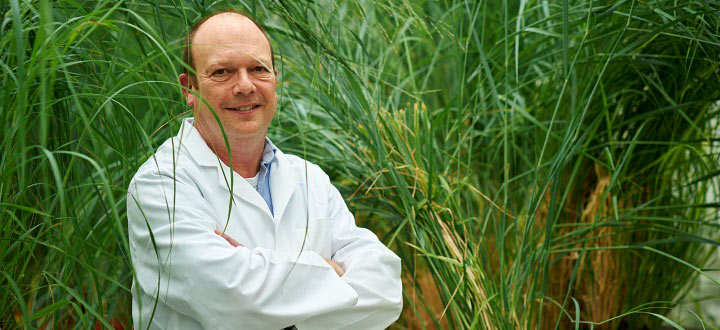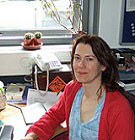When bombs explode they leave behind tiny toxic particles that contaminate soil and can leach into water supplies. It’s a particular problem on military training sites where large areas of land are now becoming heavily contaminated with residues of the explosives TNT and RDX.
Scientists at York have deployed a biological secret weapon to tackle the problem - a specially modified grass which uses naturally occurring bacterial processes to break down the toxic compounds.
And in a major milestone for the pioneering research – which first took root at York over ten years ago – the first field trials for the modified grass are underway on a military site in the United States.
Professor Neil Bruce from our Centre for Novel Agricultural Products (CNAP) leads the research which is carried out in conjunction with the United States Army and the University of Washington.
Military site
The field trials are based on a military site on the US east coast where the grasses will grow in lined plots containing soil contaminated with controlled levels of RDX.
“It will be incredibly exciting to see an idea we had in the late 90s being applied for the first time in field trials in a military area. We’ve still got a long way to go, but hopefully, we’ll soon know if what worked beautifully in the laboratories also works in the field,” says Professor Bruce who worked with Dr Liz Rylott on the project.
Drinking water
“The main problem for the US military is RDX, because although TNT is actually more toxic, it tends to stay on the site of the contamination. RDX is more mobile and can leach through the soil into drinking water potentially causing problems for public health.”
In the United States, military sites covering an area of land almost as large as England and Wales are affected by pollution from munitions.
The team’s solution to the problem takes advantage of the ability of naturally-occurring soil bacteria that can break down explosives. The research team at York identified the enzymes that drove the process and the genes that encode them and then introduced them into a plant.
“It worked beautifully,” explained Professor Bruce. “The modified plants were resistant to toxicity from the explosives. Crucially, they removed the contaminants from the soil and water in a more efficient way than the bacteria in the soil.”
Nitrogen
In an interesting twist, the researchers found that the plants actually grew better in the polluted soil than in pristine soil because they were able to extract nitrogen from the toxic residues using it as a fertiliser for growth. “A win, win,” says Professor Bruce.
The scientists went on to introduce the genes into switch grass, a type of grass native to firing ranges in the United States.
The US field trials will last around three years. The next stage, says Professor Bruce, will be to carry out trials on a larger scale within training target zones where the highest levels of contamination are found.
“It’s a rather unique situation because unlike most pollution problems where you identify the source of the pollution and then you cut it off, here you can’t because the military will always needs to train using live munitions in training areas. It’s a problem that is not going to go away.”
And it’s not confined to the United States. Europe, Russia and the Middle East are likely to face similar problems. Some sites are still contaminated from military activity dating back to the Second World War.
Professor Bruce is already scoping out possibilities for the process to be applied to other contamination problems including applications in industries using petrochemicals and toxic solvents.
Greenhouse gases
He is also excited about the possibility of plants being engineered to absorb greenhouse gases such as methane.
“As a scientific vision, that’s about as big as it could possibly get, but we have been carrying out some very early work with colleagues at the University of Washington to investigate this and we think it definitely merits further investigation.
“I’m passionate about using environmental biology for the benefit of society – this research is a classic example of that and I’m confident there are still more advances to emerge from our work at York.”
The text of this article is licensed under a Creative Commons Licence. You're free to republish it, as long as you link back to this page and credit us.






